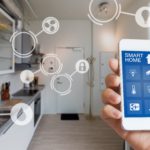Companies are maturing thanks to series C funding, with IoT cybersecurity providers Armis raising 60m and IoT platform Particle 40m in series C.
You may also like: The Future of IoT
How IoT Tech Can Help Save The Fledgling Scooter Sharing Industry
Municipalities are taking back their streets and sidewalks with new rules that require companies to meet city compliance ordinances and data sharing standards. These new governmental regulations have forced many micro-mobility companies to take a closer look at their business and the systems that power it.
While rapid deployment is still important, the most successful micro-mobility companies are now building flexible shared-mobility systems that are able to adapt to governmental regulations. The key IoT technologies that enable flexible mobility ecosystems will also enable new revenue streams and better overall customer experience.
Using IoT and Serverless: Tackling Global Issues

“The Internet of Things is an industry that has not exploded the way many thought it would”, is the opening line of Matt Werner’s reputed article DZone’s 2019 Guide to Internet of Things (IoT). Werner, who is now publications manager at Devada, most aptly describes the industry as one that brought along with it a lot of hope but failed to deliver on them at the scale anticipated almost a decade ago. One of the major expectations of IoT was its ability to solve pressing social and economic issues of humanity. That was because of IoT’s ability to incorporate technological aid with governmental and institutional efforts in tackling issues impaling global societies.
Smart Cities Are Global Cities
There remains a sense that smart cities are a term more beloved of technology vendors than citizens, with various reports showing that citizens have not really reaped the promised benefits yet. That’s not to say such lackluster performance is pervasive, with a new report from the University of Glasgow exploring the smart city landscape to see what set the most advanced cities apart from the rest.
The researchers examined over 5,500 cities around the world before settling on 27 who were leading the way. Perhaps unsurprisingly, many of these vanguard cities were capital cities of their respective countries, and as such could be regarded as global cities. The authors believe this global outreach and engagement was vital to the success of their smart city work.
Will We Company Take Over Our Smart Cities?
In the earlier days of wearable tech, I remember there were great amounts of media interest around the idea that people wearing a Fitbit or Pebblewatch at work could be subject to undue surveillance by their employers. Today, there are many employee health programs that their employer-funded health insurance tracks fitness metrics such as blood pressure and the number of daily steps in exchange for bonus points, Pebblewatch is no more, and the apps we willingly upload onto our phones are offering more data on our daily lives than ever before. But if you own a smartphone and happen to work in a smart building where everything from lighting, utility usage, meeting room occupation, and people movement is tracked, things get a bit more interesting.
WeWork Knows All About Its Inhabitants
Enter WeWork/We Company (aka We for the purposes of this article.) As of early-January 2019, WeWork had a valuation of roughly US$47 billion and managed 10,000,000 square feet of office space. They have over 425 coworking spaces in over 100 countries. They also own a series of children's schools called wegrow and welive for digital nomads and traveling executives. Last year, they acquired Meetup and Teem. Then, in February of this year, they acquired spatial analytics company Euclid. In announcing the acquisition, WeWork asserted:
The Growing Importance of an Open-Data Commons for Mobility
Public transit data was one of the first data sets in what’s known today as “smart cities” or the “Internet of Things” (IoT). The simple reason was that publishing a transit schedule in machine-readable format, or providing real-time tracking over a cellular data connection, is pretty cheap, relative to the cost of a subway train or bus.
Transit quickly became one of the best examples of open data. Civic leaders at transit agencies, like Portland’s TriMet, found that if they packaged data in a standard format, developers could use it to make better user experiences than transit agencies could offer. The GTFS (General Transit Feed Specification) standard for transit schedules was originally created by TriMet and Google to solve the problem of sharing data between agencies and developers. Now, many agencies worldwide use the same data standard.
Improving Communication Between Us and Smart Buildings
 Most of the time, humans have been living in specific accommodation, there has been little need for communication between us and our abode. As buildings become smart, however, that is beginning to change. New research from the University of Southern California (USC) highlights how the way this communication takes place has a significant impact on how we behave and, in particular, the environmental impact of our actions.
Most of the time, humans have been living in specific accommodation, there has been little need for communication between us and our abode. As buildings become smart, however, that is beginning to change. New research from the University of Southern California (USC) highlights how the way this communication takes place has a significant impact on how we behave and, in particular, the environmental impact of our actions.
The researchers explain that we spend the vast majority of our time indoors, and that buildings account for around 40 percent of the carbon dioxide emissions pumped into the atmosphere. There is a strong desire, both from the public themselves and from legislators, for this number to be significantly reduced. Changes in how we behave could go a long way towards achieving that reduction.

